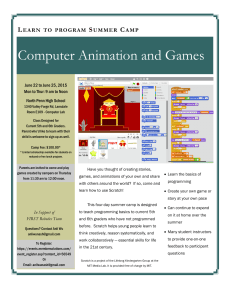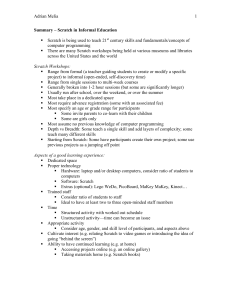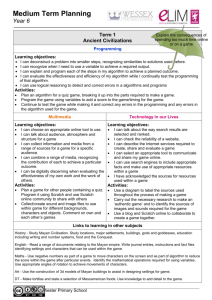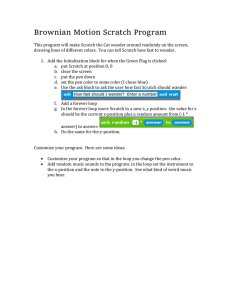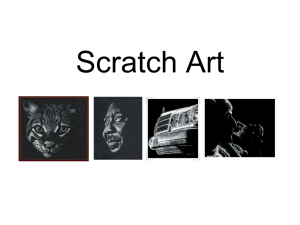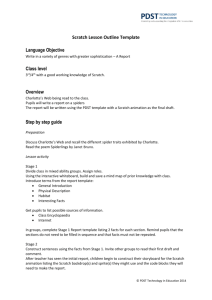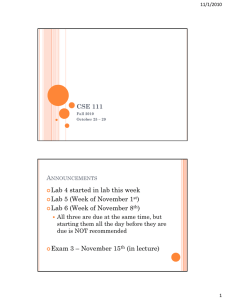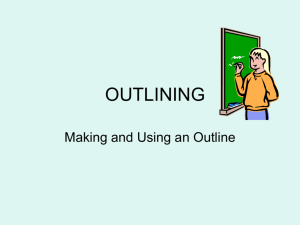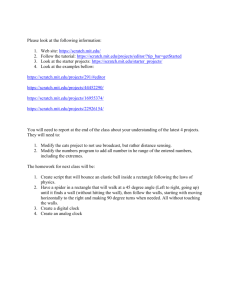sustained reasoning,
advertisement
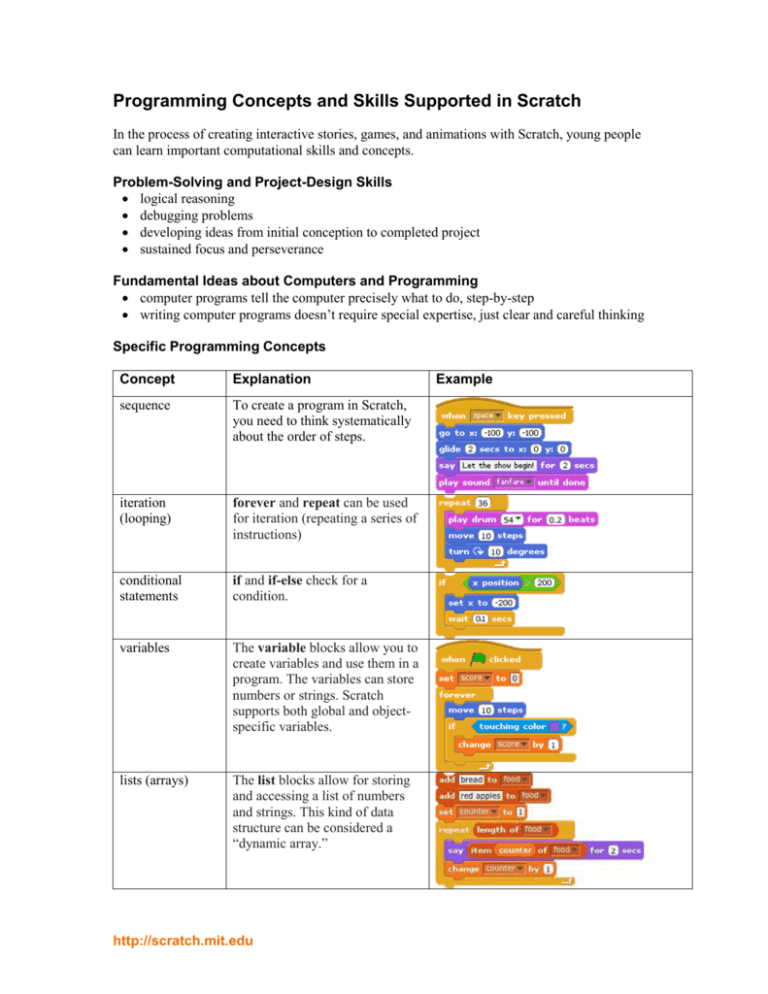
Programming Concepts and Skills Supported in Scratch In the process of creating interactive stories, games, and animations with Scratch, young people can learn important computational skills and concepts. Problem-Solving and Project-Design Skills logical reasoning debugging problems developing ideas from initial conception to completed project sustained focus and perseverance Fundamental Ideas about Computers and Programming computer programs tell the computer precisely what to do, step-by-step writing computer programs doesn’t require special expertise, just clear and careful thinking Specific Programming Concepts Concept Explanation sequence To create a program in Scratch, you need to think systematically about the order of steps. iteration (looping) forever and repeat can be used for iteration (repeating a series of instructions) conditional statements if and if-else check for a condition. variables The variable blocks allow you to create variables and use them in a program. The variables can store numbers or strings. Scratch supports both global and objectspecific variables. lists (arrays) The list blocks allow for storing and accessing a list of numbers and strings. This kind of data structure can be considered a “dynamic array.” http://scratch.mit.edu Example event handling threads (parallel execution) coordination and synchronization when key pressed and when sprite clicked are examples of event handling – responding to events triggered by the user or another part of the program. Launching two stacks at the same time creates two independent threads that execute in parallel. broadcast and when I receive can coordinate the actions of multiple sprites. Using broadcast and wait allows synchronization. For example, Sprite1 sends the message winner when condition is met: This script in Sprite2 is triggered when the message is received: keyboard input random numbers boolean logic ask and wait prompts users to type. answer stores the keyboard input. pick random selects random integers within a given range. and, or, not are examples of boolean logic. dynamic interaction mouse_x, mouse_y, and loudness can be used as dynamic input for real-time interaction user interface design You can design interactive user interfaces in Scratch – for example, using clickable sprites to create buttons. Programming concepts not currently introduced in Scratch: procedures and functions; parameter passing and return values; recursion; defining classes of objects; inheritance; exception handling; file input/output. http://scratch.mit.edu

